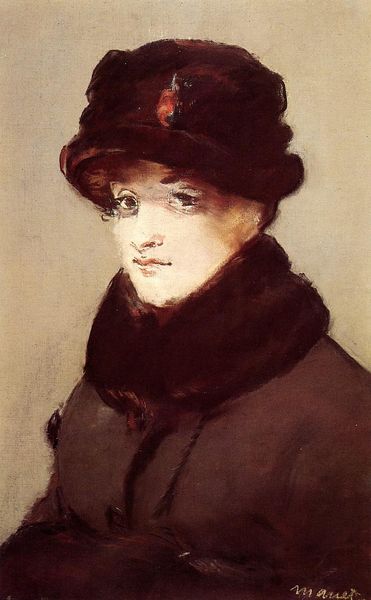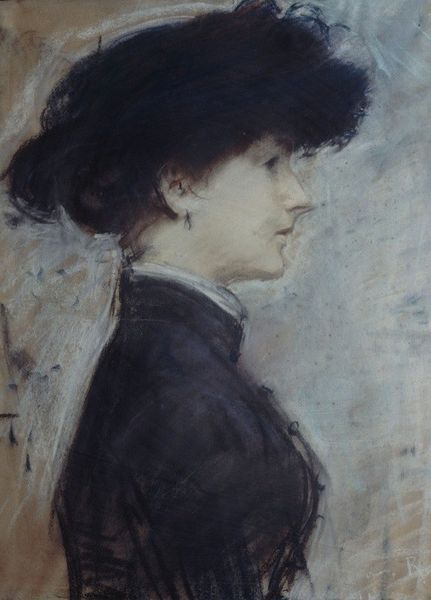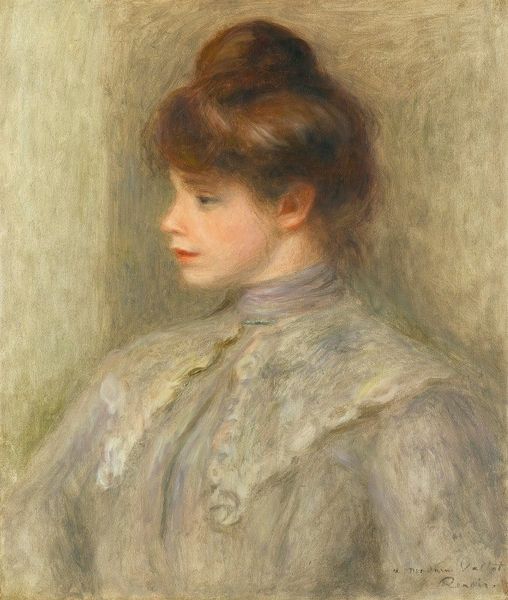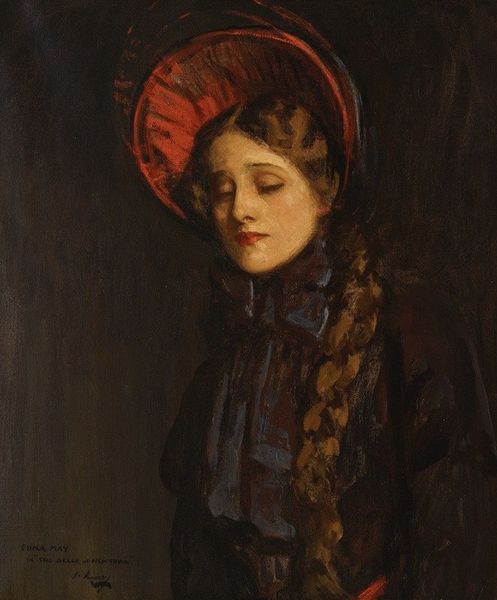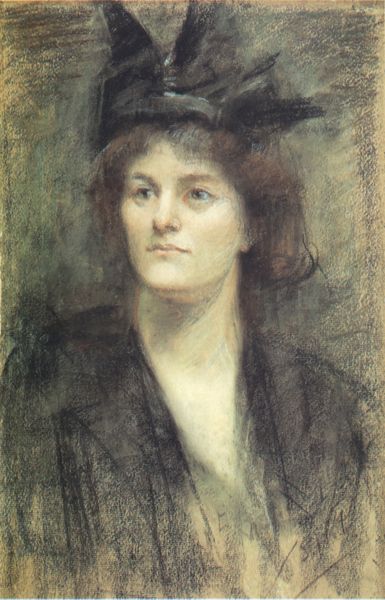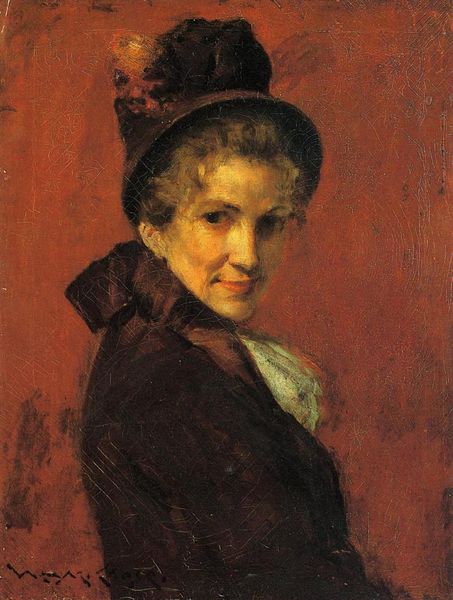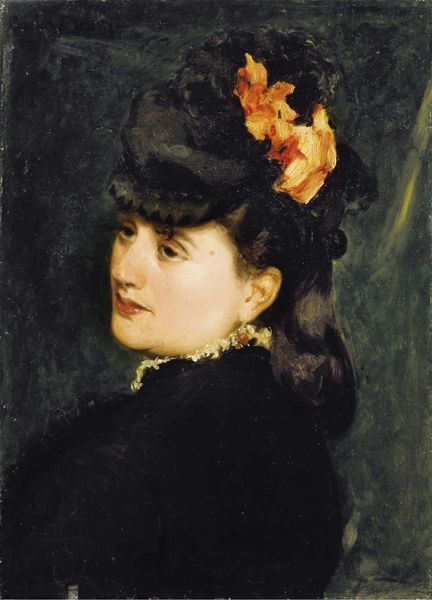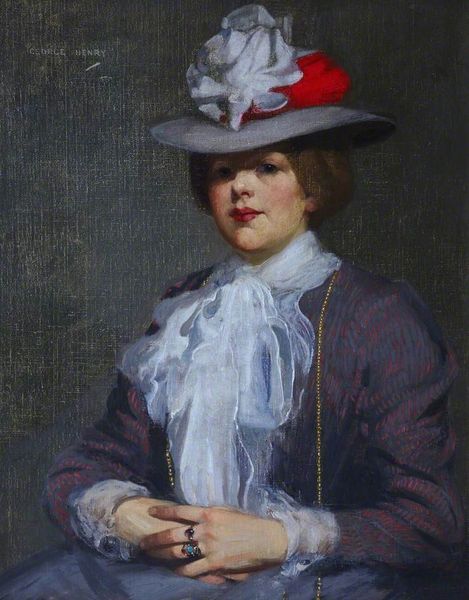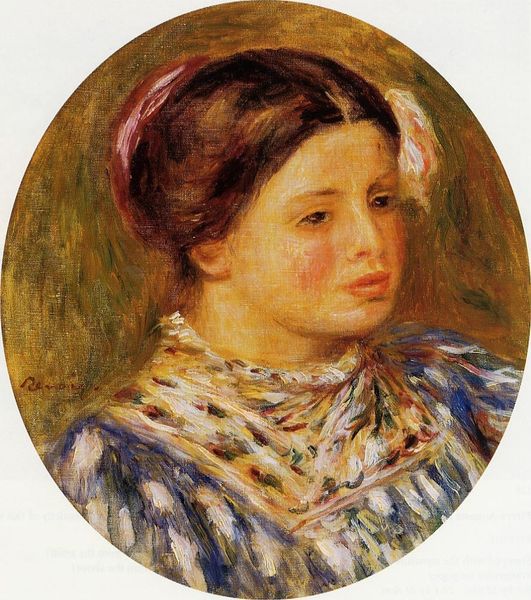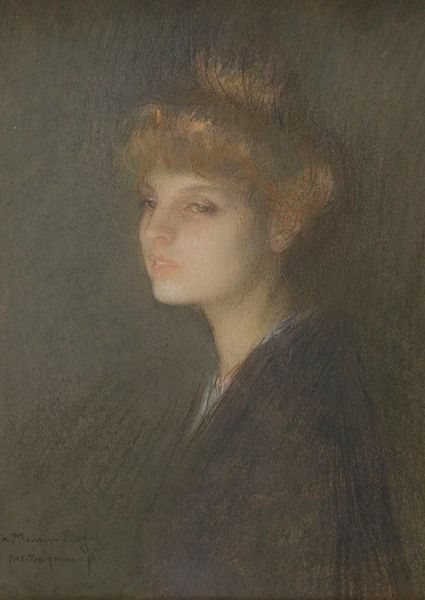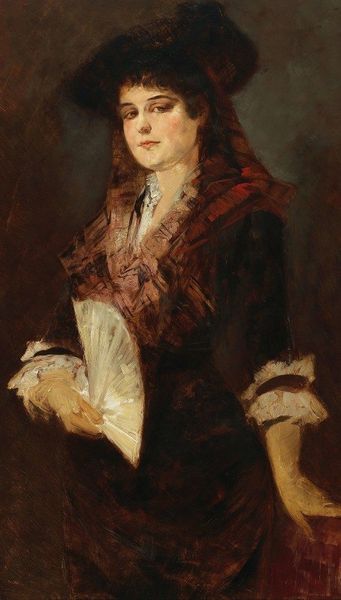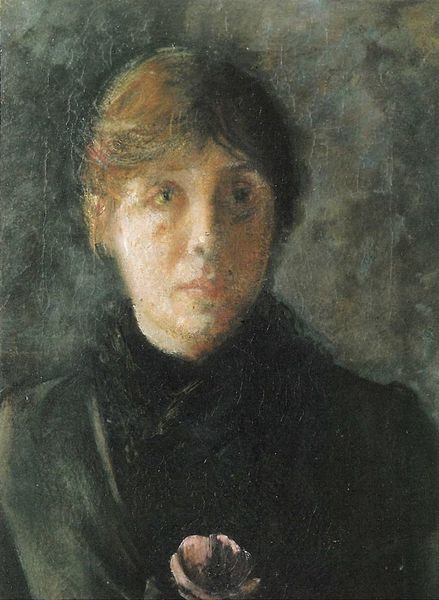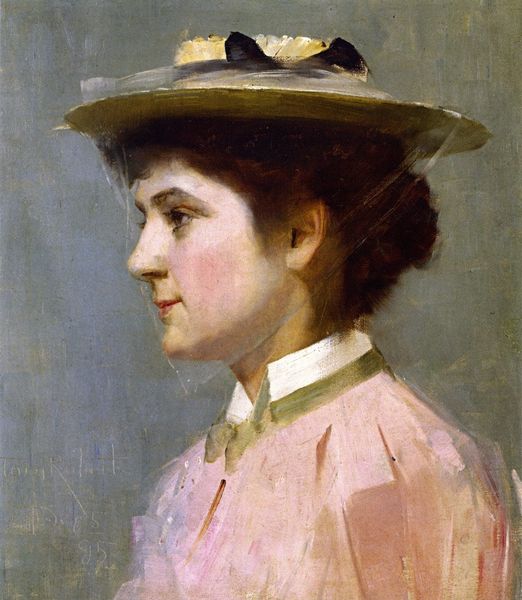
Copyright: Public domain
Editor: Here we have Lilla Cabot Perry's "Self-portrait" from 1892, rendered in oil paint. I'm struck by the soft, almost melancholic quality of the piece. What elements draw your attention when you view this work? Curator: Well, this piece raises interesting questions about the role of women artists at the time, especially in Impressionist circles. The subdued palette and somewhat obscured face invite speculation. Consider the public image Perry, as a woman artist, might have wanted to project versus her own internal representation. Do you think this portrait confirms or subverts any expectations for women painters in the late 19th century? Editor: That’s a great point about subverting expectations. The dark colors and shadowed face certainly feel less traditionally feminine than many portraits from that period. It also seems less posed, somehow more intimate. Do you think the Impressionistic style contributed to this sense of intimacy? Curator: Absolutely. The broken brushstrokes and emphasis on light create a sense of immediacy. The Impressionists were concerned with capturing fleeting moments. How does this fleeting quality influence the perceived authenticity of the self-portrait? Is it a truer representation because it appears less staged, or is it another layer of constructed identity? Editor: I hadn't thought about it that way, but the ‘fleeting moment’ could just as easily be a carefully curated impression. I wonder, did the art world's response to Impressionism play a part in Perry's artistic decisions here? Curator: Undoubtably! Perry strategically positioned herself within those circles, aligning with prominent figures such as Monet. Her style, subjects, and even self-presentation had to consider market forces and the existing institutional frameworks for exhibiting and selling art. What do you make of the hat? It nearly steals the show! Editor: It’s incredibly striking, perhaps even deliberately drawing our eye away from scrutinizing her face too closely. I suppose, by framing her in such a complex fashion, it grants her agency, even as it seems to distance us. Thank you. I now feel as if I am viewing this self-portrait through the eyes of the artist! Curator: Precisely! Hopefully, it helps understand the artist's social position and influence too.
Comments
No comments
Be the first to comment and join the conversation on the ultimate creative platform.

